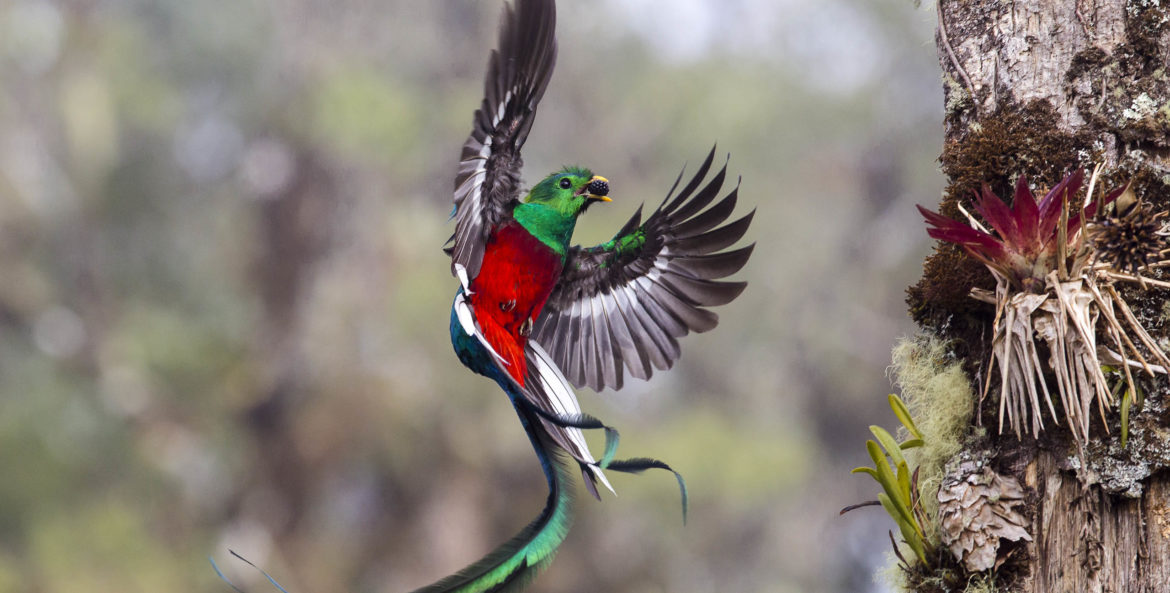The quetzal (Pharomacrus Mocinno) is considered one of the most beautiful birds in the world. A title of great value considering the competition it faces since there are so many and so beautiful all over the planet. Likewise, hunting, illegal trafficking, as well as the loss of its natural habitat have brought it closer to the brink of extinction. For that reason we need to keep working on ways to protect this beautiful species and continue to say that The Quetzal is America’s most beautiful bird.
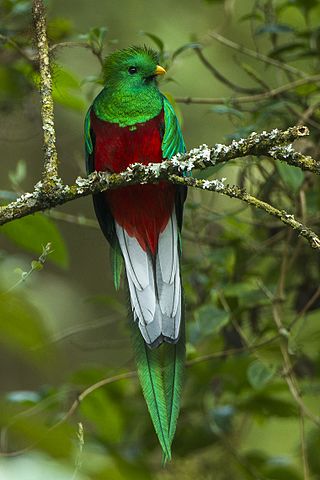
Quetzals are brightly colored birds of the trogon family. They are found in forests, especially in humid highlands, with the five species in the genus Pharomachrus being exclusively Neotropical, while a single species, the long-eared quetzal, Euptilotis neoxenus, occurs in Guatemala, sometimes in Mexico, and very locally in the far south of the United States. Quetzals are quite large (all are over 32 cm or 13 inches long), and slightly larger than other trogon species.
The resplendent quetzal is the national bird of Guatemala because of its vibrant color.
Quetzals have iridescent green or golden-green wing coverts, back, breast, and head, with a red belly. Its wings are suitable for camouflage in rainy conditions because its feathers blend well with wet, bright green areas.
This monogamous bird inhabits tropical and subtropical forests and feeds on avocado trees, insects and mollusks, lizards, and frogs, among others, while its natural predators are the green toucanet, squirrels, and other nocturnal mammals; the owls, hawks, and eagles, but above all the humans who capture it to sell it as a pet, without knowing that it does not survive captivity. Therefore, the effort for its conservation will allow us to continue saying that the Quetzal is America’s most beautiful bird.
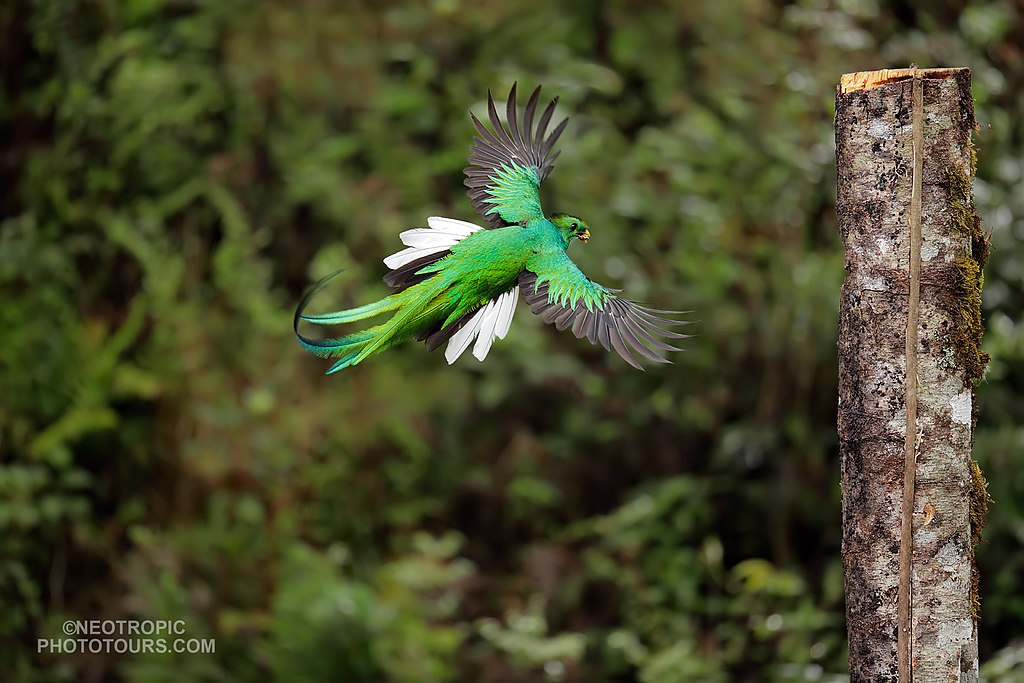
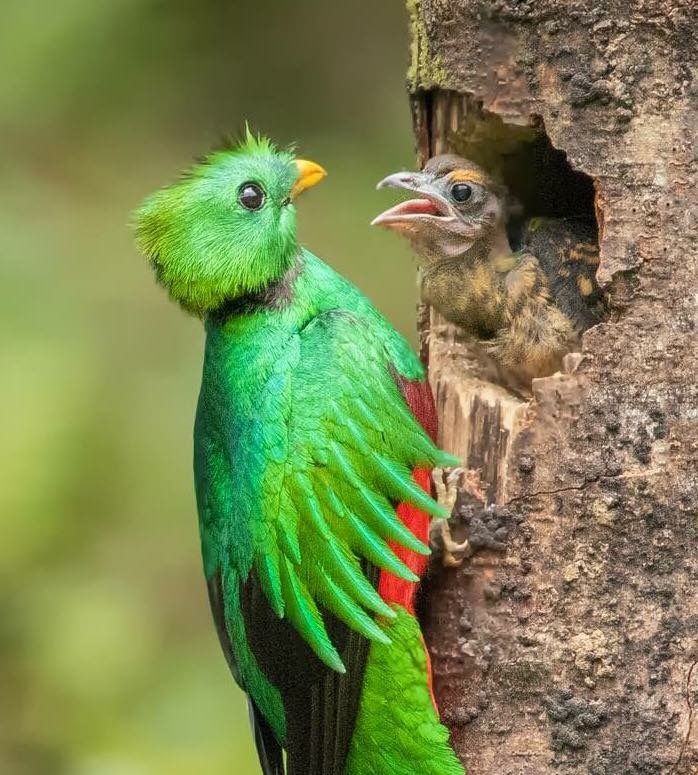
The beauty of this bird brings together round and dark eyes that give it a peaceful air, an incipient plume crowning the head that ends with a small intense yellow beak, and, above all, a spectacular shiny and colorful plumage in the male that exhibits in the almost 42 centimeters of its body iridescent shades of red on the belly; orange, yellow, blue and emerald green in the rest of the body and in the spectacular tail of four feathers up to a meter long that reveals its sexual dimorphism.
The female is duller green and gray colors and lacks long tail feathers.
The ancient Mexicans decorated headdresses, banners, and garments of sovereigns and priests with the feathers of the quetzal (from the Nahuatl, quetzalli: a tail of bright feathers, and from the Maya, bright and precious feather), considered a symbol of power and wealth, of fertility. , abundance, and life. A very important example is the headdress that supposedly belonged to the last Aztec emperor, Moctezuma and that is in the Museum of Ethnology in Vienna, Austria.
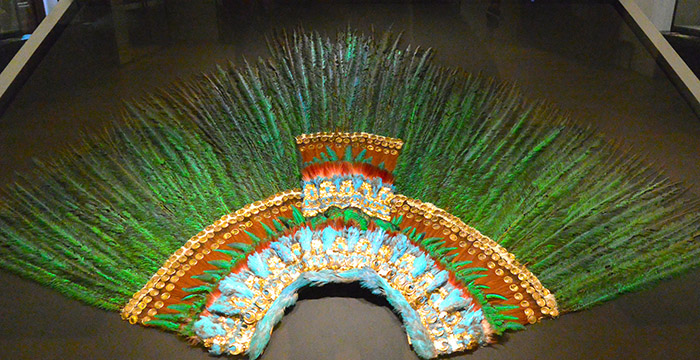
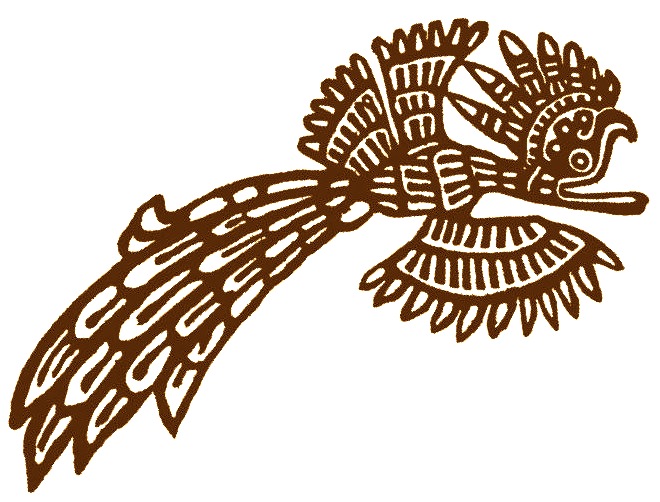
The cloud forests, areas of distribution of the quetzal, are increasingly reduced. On the maps there are 21 small insertions from the southeast of Mexico to Panama, passing through Guatemala, Honduras, El Salvador, Nicaragua, and Costa Rica, where the quetzals fly no more than 30 kilometers.
This fragmentation refers to the destruction of its reproductive habitat. A clear example is the cloud forests of Chiapas, the habitat of the quetzal in Mexico, where 78 percent of that ecosystem has been lost in recent decades.
The Quetzal is America’s most beautiful bird.
The quetzal, the most beautiful bird in America, is a protected species not only in Mexico but internationally. The Convention on International Trade in Endangered Species of Wild Fauna and Flora (CITES) establishes the prohibition of trafficking in live or dead specimens or with products or by-products of the quetzal, while in Mexico it is classified as an endangered species, therefore which protected areas have been established so that the habitats of the quetzal are safeguarded.
Although the quetzal is a bird that lives from the Mexican state of Chiapas to Panama, it is possible to see it sporadically in the Riviera Maya. A region with an important diversity in flora and fauna that surprises locals and strangers. If you want to know more on investment opportunities in this region, we invite you to contact us at Select Riviera Maya Real Estate and we will gladly advise you on the best options to secure your heritage and acquire a property in this corner of paradise.

